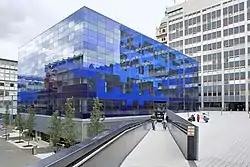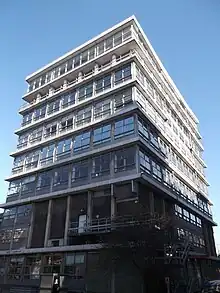 | |
| Formation | 2013 |
|---|---|
| Type | Consortium |
Region served | Southeast of England |
Membership | Imperial College London King's College London University of Oxford Queen Mary University of London University of Southampton University College London University of Cambridge |
| Website | www |
Science and Engineering South (more commonly known as the SES, and previously SES-5[1]) is a consortium of 7 public research-intensive universities in the Southeast of England, who pool their resources and facilities[2] to further research in the fields of science and engineering.[3] Its members accounted for a third of all EPSRC spending in 2013, when the consortium was formed.[4] King's College London joined the consortium in 2016, becoming the sixth member institution.[5] By March 2017, Queen Mary University of London had joined the consortium. The University of Cambridge, one of the founder institutions, rejoined in 2019 after leaving in 2017.[6]
SES enables a network of high-performance computers available for research and scientific calculations across all its member universities, such as the 12,000 core IRIDIS Intel Westmere supercomputer cluster.[7]
Gallery
 Imperial College London
Imperial College London
(Faculty Building) King's College London
King's College London
(King's Building) University of Oxford
University of Oxford
(Thom Building).jpg.webp) Queen Mary University of London
Queen Mary University of London
(The Queens' Building) University of Southampton
University of Southampton
(Institute of Sound and Vibration Research) University College London
University College London
(Engineering Building)
References
- ↑ "SES-5 article on UCL website". 9 May 2013. Retrieved 9 May 2013.
- ↑ "Equipment sharing".
- ↑ "SES-5 article on UCL website". 9 May 2013. Retrieved 9 May 2013.
- ↑ "Research heavyweights deny ganging up". 9 May 2013. Retrieved 9 May 2013.
- ↑ "King's College London Joins SES". SES. 1 March 2016. Retrieved 5 August 2016.
- ↑ "About". SES. Retrieved 13 March 2017.
- ↑ "Science and Engineering South". Archived from the original on 12 May 2015.